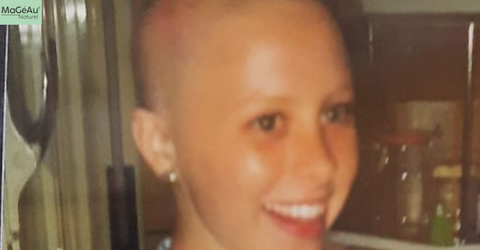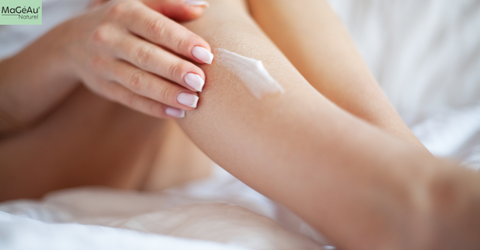Going through chemotherapy was one of the toughest experiences of my life, and the unexpected skin changes only made things harder. While I was focused on fighting cancer, I also had to deal with relentless itching, peeling, dryness, and sensitivity that made daily life uncomfortable.
If you're on this journey, I want to share what I learned about managing these skin issues so you can feel more comfortable and in control. Below, I’ll walk you through the most common skin concerns I faced and the safe, natural methods that helped me.
1. Extreme Dryness and Flaking
One of the biggest challenges I faced during chemotherapy was severe skin dryness. The chemo drugs affected my skin’s ability to retain moisture, leaving it flaky, tight, and even cracked at times.
How I Managed It:
- Hydration Is Key: I made it a point to drink plenty of water throughout the day to keep my skin hydrated from within.
- 100% Natural Moisturisers: I switched to a body lotion free from harsh chemicals, artificial fragrances, and alcohol. Shea butter, coconut oil, and aloe vera became my go-to ingredients.
- Use a Hydrating Shower Gel: Harsh, soapy body washes only made things worse, so I opted for a hydrating shower gel that cleansed gently while locking in moisture.
- Apply Moisturiser Immediately After Showering: I found that applying lotion right after a shower helped seal in the moisture.
2. Skin Sensitivity and Rashes
During chemo, my skin became super sensitive to everything—clothing, weather, even products I had used before with no issues. Redness, rashes, and irritation became part of my daily struggles.
How I Managed It:
- Switched to a Gentle Cleanser: I ditched soaps with sulfates, parabens, and artificial fragrances. A mild, fragrance-free cleanser was a game-changer.
- Wore Soft, Breathable Fabrics: Cotton and bamboo were my best friends since they reduced friction on my sensitive skin.
- Avoided Hot Showers: Hot water stripped away natural oils, making the irritation worse. Lukewarm water was a much better option.
- Used Natural Skincare Products: I learned that many conventional skincare products contain preservatives and fragrances that worsened my sensitivity. Natural alternatives worked best.
3. Increased Itching and Irritation
The itching was relentless and made it hard to sleep or focus. The combination of dryness and inflammation made me want to scratch constantly, which only led to more irritation.
How I Managed It:
- Used Oatmeal-Based Products: Oatmeal had a soothing effect on my skin and helped relieve the itching.
- Applied Cold Compresses: A cool, damp cloth on itchy areas gave me instant relief.
- Moisturized Regularly: Using a rich body lotion multiple times a day kept my skin from getting too dry and itchy.
- Opted for Hypoallergenic Skincare: I chose natural, plant-based products with no harsh chemicals or artificial fragrances.
4. Increased Sun Sensitivity
I was surprised to find that chemotherapy made my skin much more sensitive to the sun. Even short periods outdoors led to redness, burns, and dark patches.
How I Managed It:
- Wore Protective Clothing: Lightweight, long-sleeved shirts, wide-brimmed hats, and sunglasses became my daily uniform.
- Used a Natural, SPF-Infused Moisturizer: I avoided chemical-heavy sunscreens and used mineral-based options with zinc oxide.
- Limited Direct Sun Exposure: I stayed indoors between 10 AM and 4 PM when the sun was at its strongest.
- Reapplied Moisturizer Frequently: Keeping my skin hydrated helped reduce sun-related damage.
5. Nail and Cuticle Changes
My nails took a hit during chemotherapy—they became brittle, discolored, and prone to peeling. Sometimes they even felt sore.
How I Managed It:
- Kept My Nails Hydrated: I applied natural cuticle oil, like coconut or almond oil, daily.
- Avoided Harsh Nail Products: I stayed away from acetone-based nail polish removers and opted for gentle, non-toxic nail treatments.
- Wore Gloves for Household Chores: To protect my nails from harsh detergents and excessive water exposure, I always wore gloves.
- Kept My Nails Short and Clean: This minimised breakage and reduced the risk of infection.
6. Darkening or Peeling Skin on Palms and Soles
At one point, I developed hand-foot syndrome, where the skin on my palms and soles became red, swollen, and started peeling. Walking and even holding objects became uncomfortable.
How I Managed It:
- Used a Hydrating Foot and Hand Cream: I looked for deeply nourishing ingredients like shea butter and vitamin E.
- Wore Soft, Comfortable Shoes: Avoiding tight footwear helped reduce friction and prevented worsening of the peeling.
- Soaked My Feet and Hands in Cool Water: This provided relief from burning and discomfort.
- Applied Moisturiser Generously Before Bed: Locking in moisture overnight by wearing cotton gloves or socks made a noticeable difference.
Conclusion: How I managed the Skin Changes During Chemotherapy, Tips for Healthy Skin
Dealing with skin issues during chemotherapy was challenging, but I found that small, mindful changes made a huge difference. Sticking to gentle, natural products that nourished rather than irritated my skin was key. Prioritizing hydration, choosing a gentle cleanser, and using a hydrating shower gel and body lotion helped me feel more comfortable.
If you're going through something similar, I hope these tips help you as much as they helped me. You're not alone in this journey, and taking care of your skin is just another way to take care of yourself. Stay strong!





Comments (0)
There are no comments for this article. Be the first one to leave a message!